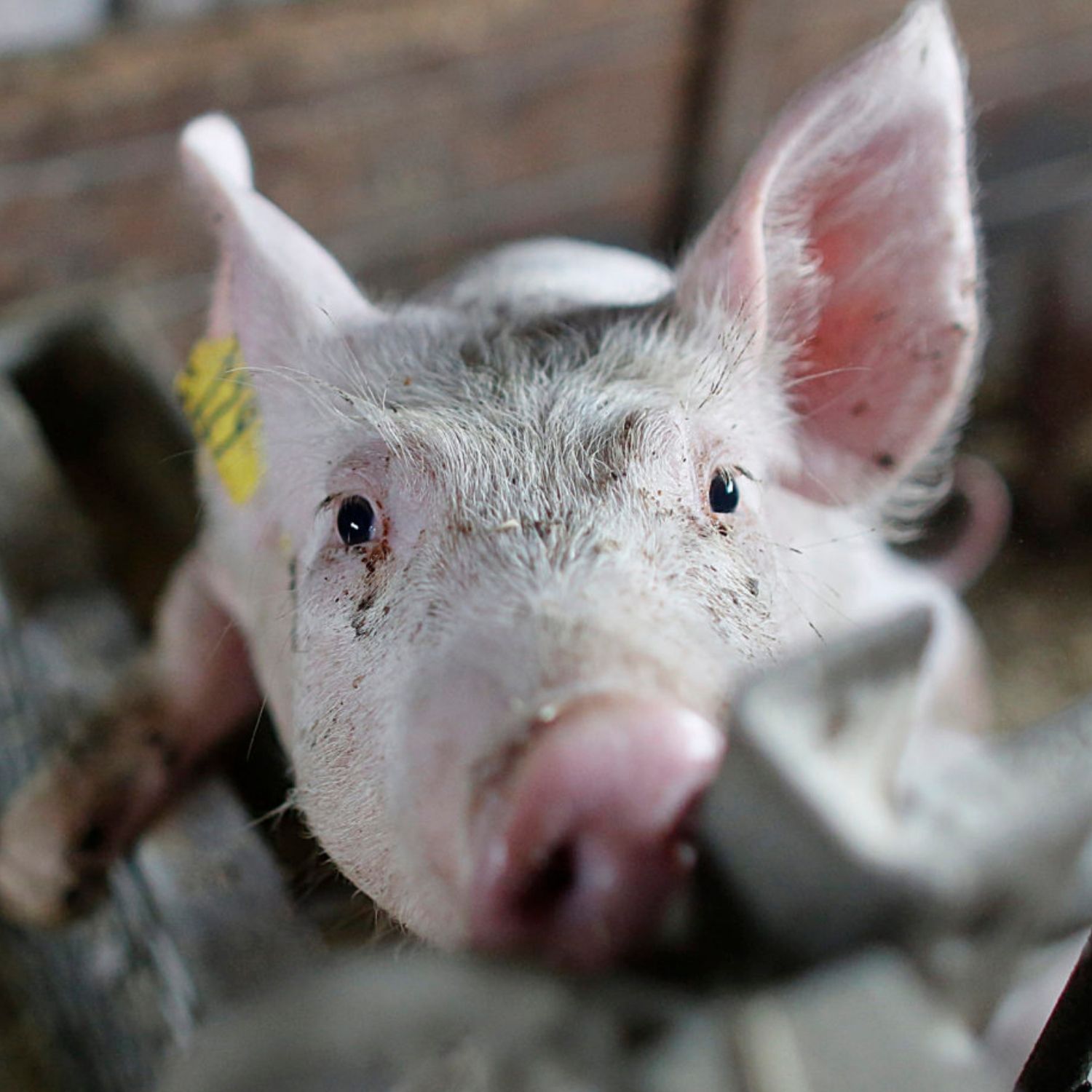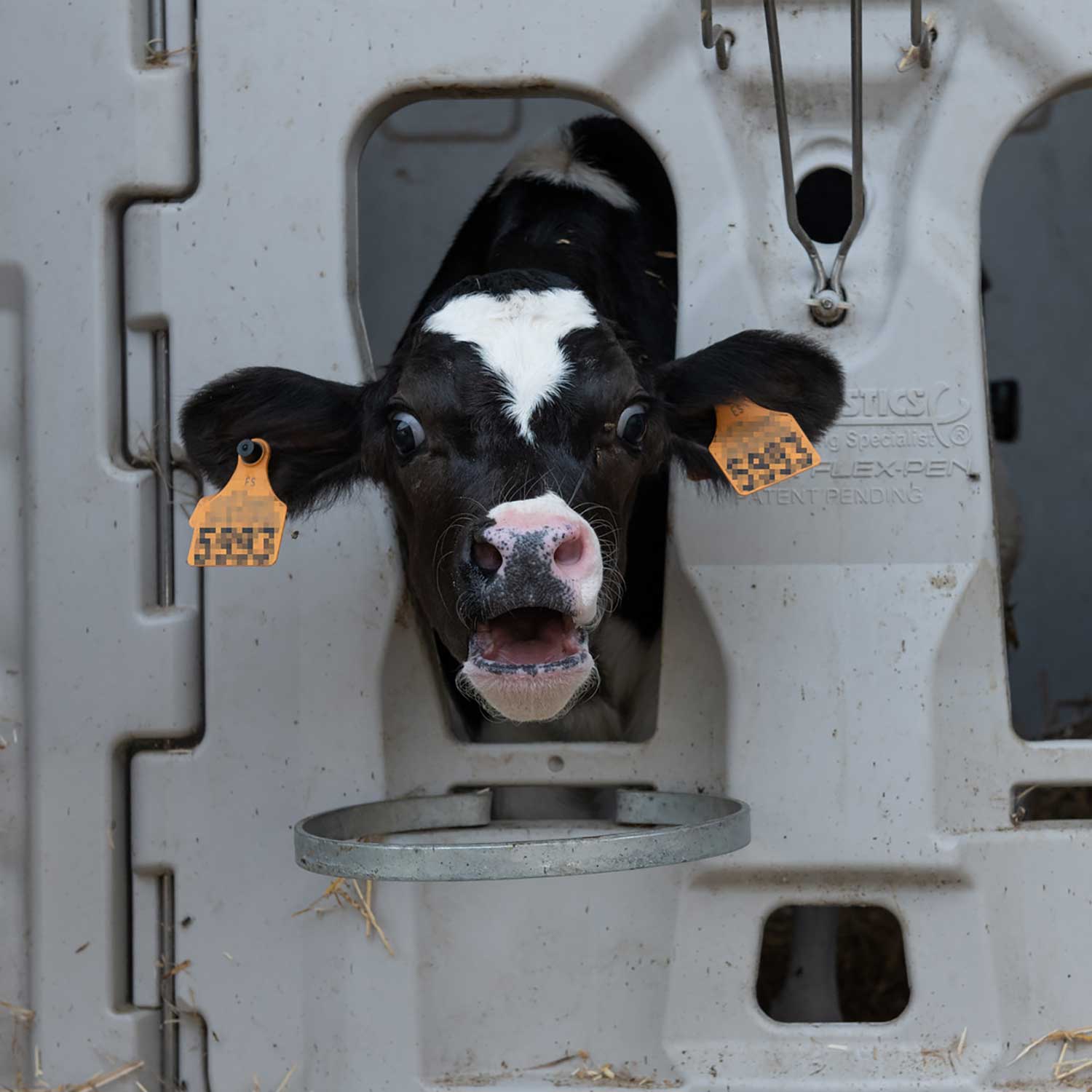REVEALED: 9 Frightening Facts about Factory Farming
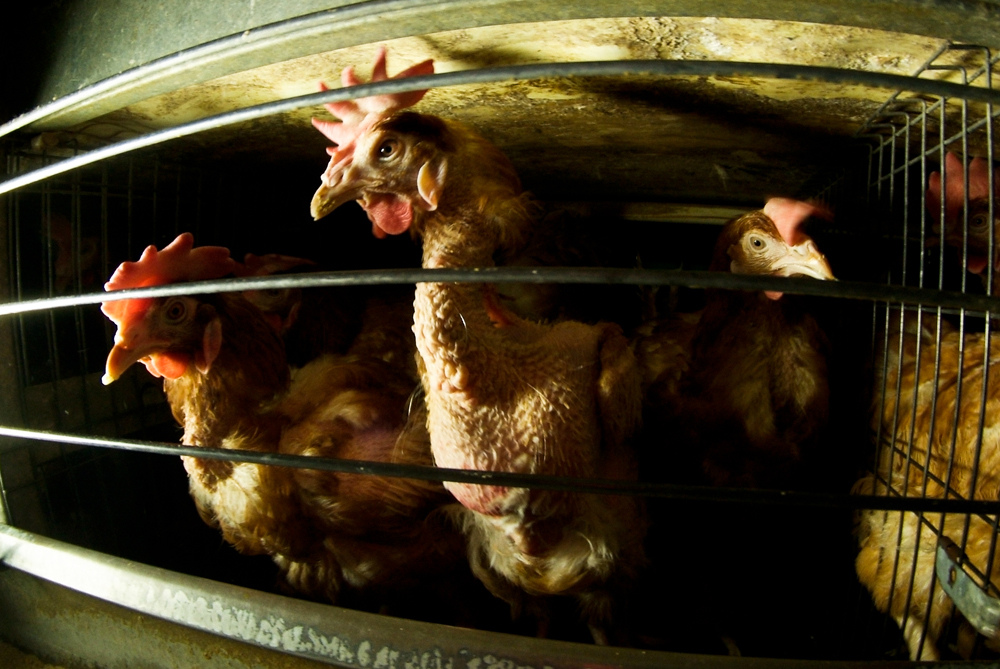
Despite the abhorrent cruelties behind this colossal trade, to this day, factory farms continue to dominate and control the meat industry. This is due to its large-scale production and rapid profit. These industrial operations not only are the source of intense distress for the animals exploited in these confinements, but also of what some call ‘food’, plagued with damaging chemicals, antibiotics, harmful hormones and even deadly diseases.
Informing oneself of the foods one consumes should be a priority and of upmost importance. Here is the dark truth which often remains hidden and unspoken about, far away from the public domain.
1. Chickens’ beaks are sliced off in order to avoid cannibalism
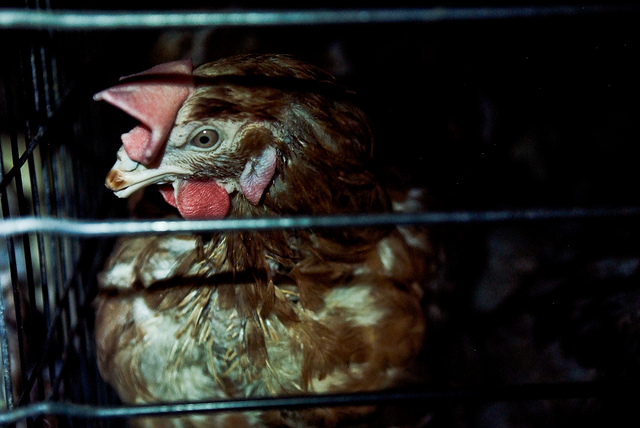
Although an archaic and extremely painful practice, this method continues to prevail throughout the meat and egg industry – yes, even in so-called “free range egg farms”! The reason behind this cruelty is due to the fact that birds are crammed into huge, windowless sheds, forced to share their space with thousands of others, often resulting in pecking themselves or each other to death. Chickens aren’t the only ones that suffer this horrific procedure, but also turkeys and ducks. A significant number of these animals actually die through the process of this painful routine.
2. Do you know what antibiotics you’re eating?
Animals in factory farms are force fed large quantities of potent antibiotics to keep them surviving in deplorable conditions which would otherwise kill them: living in each others faeces, extreme amounts of dust and chronic respiratory diseases to name a few. In 2011, over 80% of antibiotics produced were fed to animals which humans then consumed and ingested. Most antibiotics in the world go straight into your meat. We often believe that these drugs could actually be protecting us from illnesses and diseases but this is far from the truth. In fact, they are actually causing a shocking rise of many deadly and harmful side effects for the human body.
3. Pneumonia epidemic in factory farmed pigs

Ammonia and other highly toxic gases and substances are released into the air due to the enormous quantities of faeces that the animals are forced to live in. Consequently, the vast majority of pigs living in these terrible conditions suffer from pneumonia and pneumonia-like lesions on their afflicted, battered lungs.
4. Baby Chicks Are Ground Up Alive The Day They Hatch
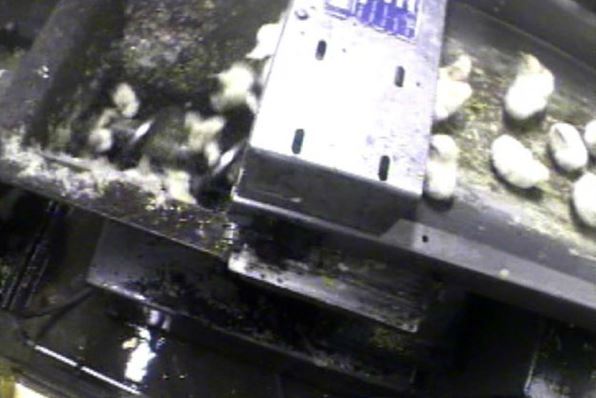
Regardless if “free range”, baby chickens who are of no use or interest to the cruel egg industry are thrown onto a continuously moving conveyor belt to then be tragically and instantly ground up alive. This is ruthlessly widespread and “the norm” in the industry, contributing to the death of millions of chicks, these often being male.
5. Many cows die before they are even 5 years old
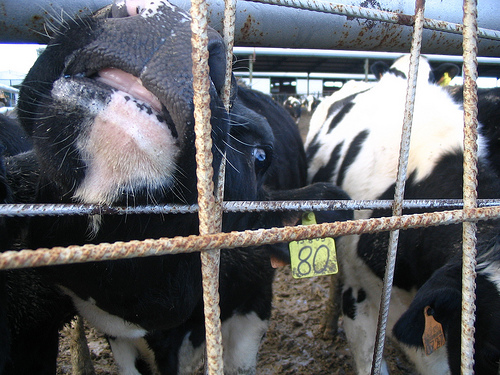
Cows cannot escape from the cruelty, confinement and death imposed by the factory farming industry either. Naturally, cows can potentially live to about 20 years old but the dairy industry ends dairy cows’ lives by sending them to slaughter before even reaching the age of 5. Cows’ health is severely affected by the intensity of these cruel industrial conditions.
6. Pregnant mothers are imprisoned in extremely restrictive crates
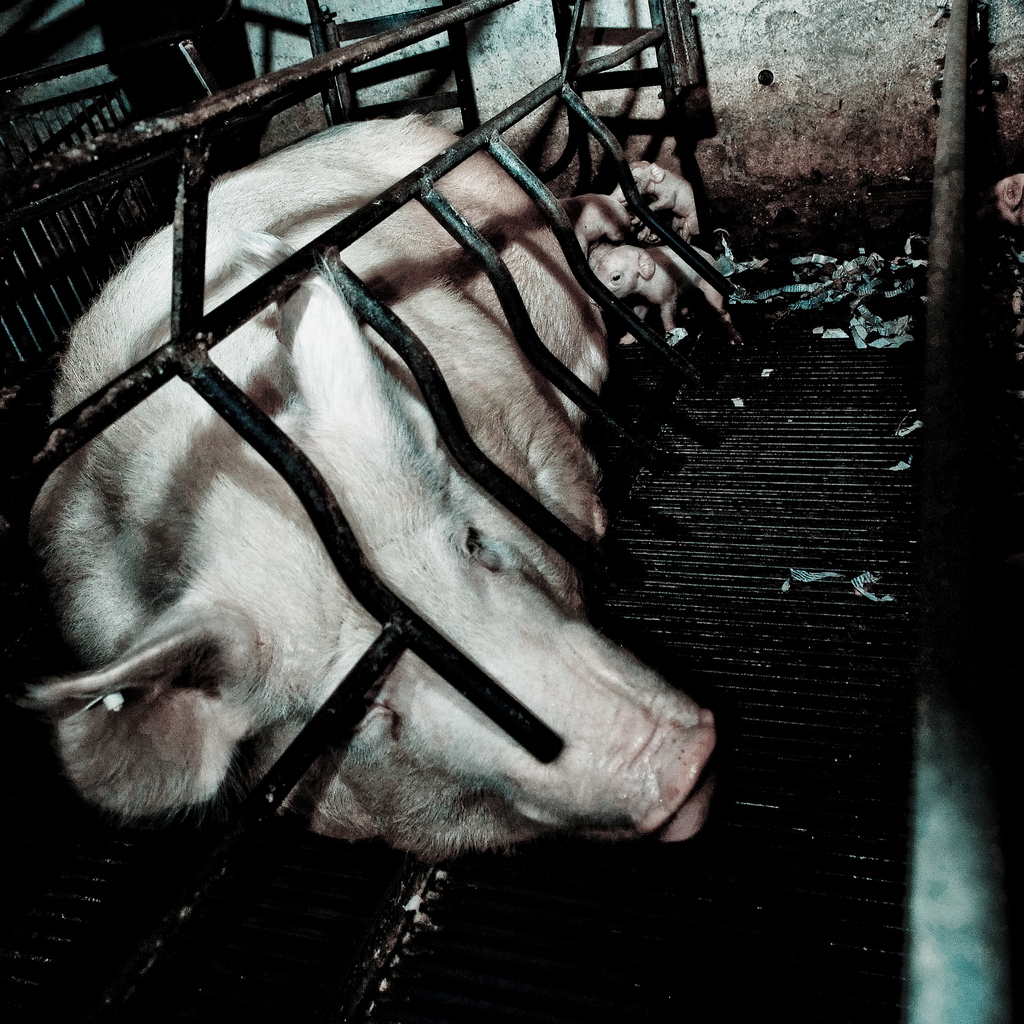
In factory farming, so called “gestation crates” cut down on cost and space but add up in pain and suffering, immobilising pregnant pigs often in their own excrements. The consequences of this practice? Sores, ulcers, abscesses, dislocations and even death for many mothers and their babies.
7. Veal calves are enchained with weighty metal rings
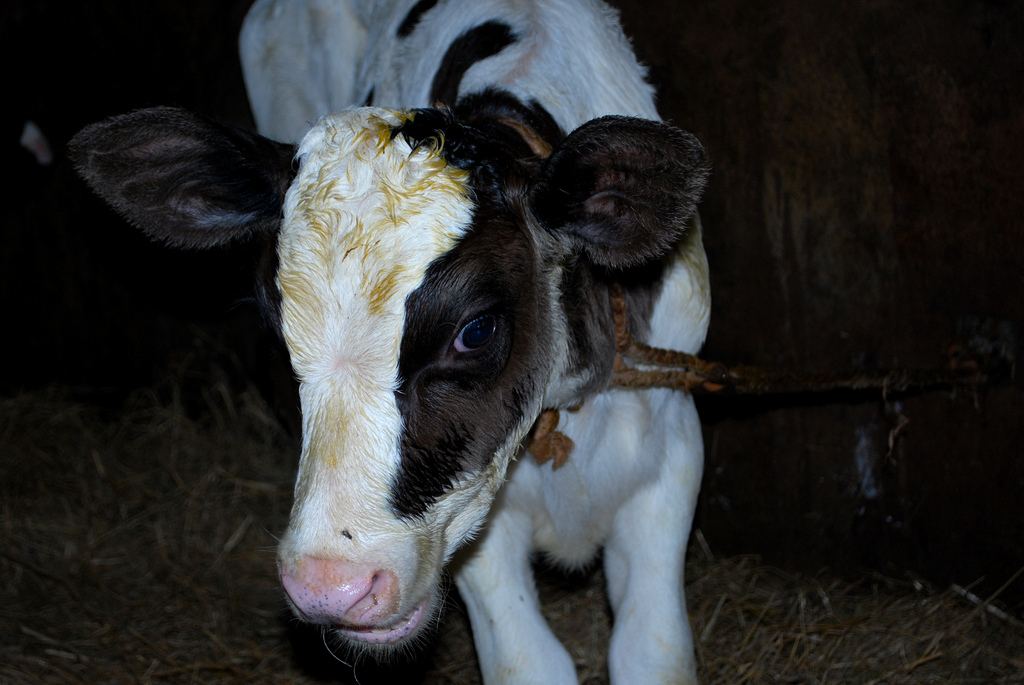
A dirty secret of the dairy industry which also remains concealed is the tragic saddling of baby cows. Apart from getting their horns painfully removed without anaesthesia, veal calves are often forced to endure having weighty chains attached to their necks to prevent them from moving too much. If that wasn’t enough, they are kept in pitch-black conditions, often suffering severely from anemia, for no other reason than to keep their flesh light-toned and attractive for the consumer to eat.
8. Many birds are crammed into barbarically tiny confinements
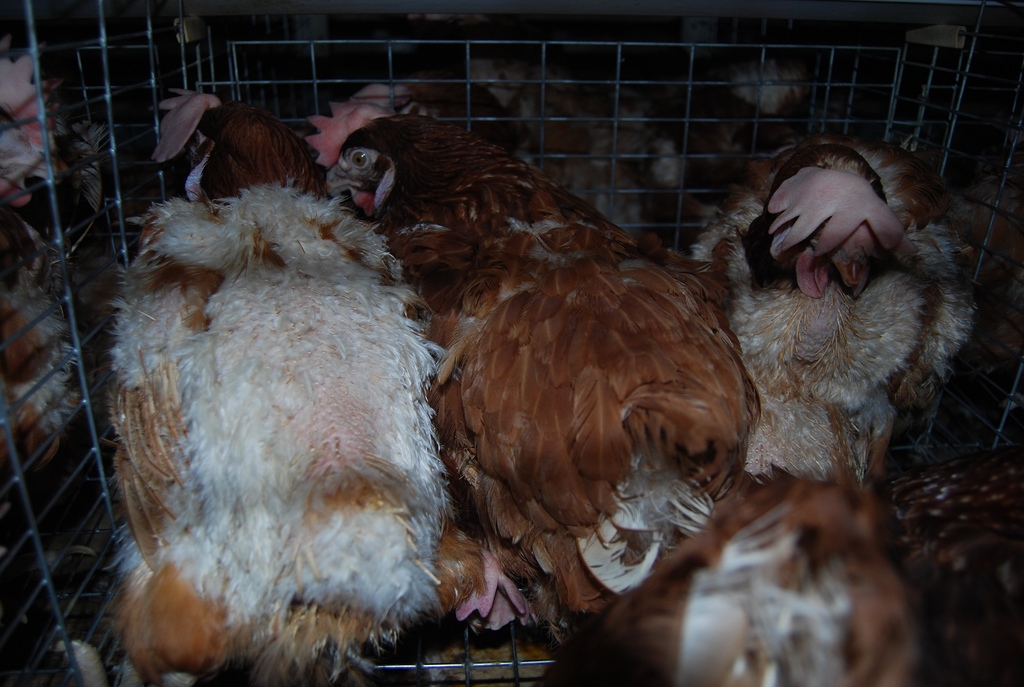
The most predominant living space for egg-laying hens are the notorious “battery cages”: wired, extremely restrictive cages which provide less than a regular sized sheet of paper of space per hen. This cruelty is interlinked with the act of debeaking, both of these causing great distress, discomfort and pain for the animals kept captive in these exploitative centres.
9. Tail docking is still a common practice
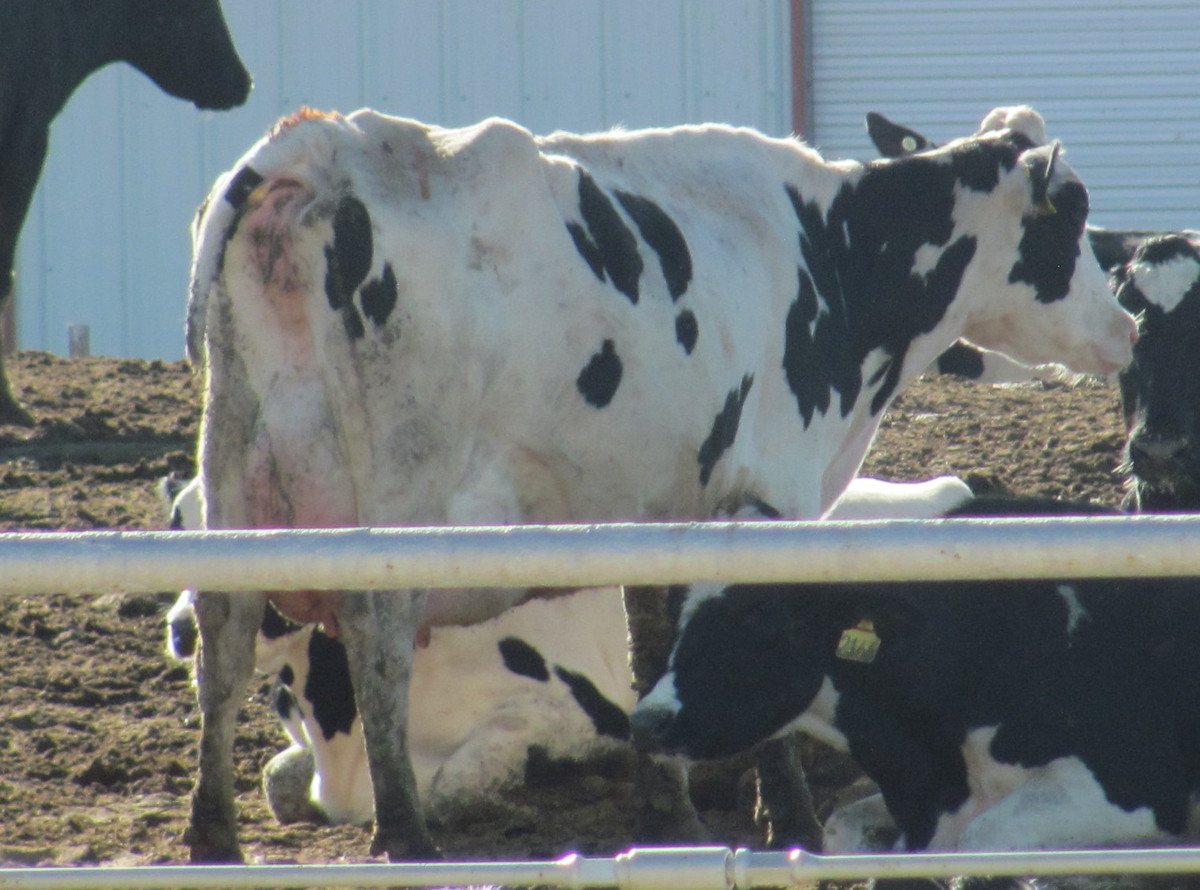
This brutal, agonising implementation is the deliberate removal of an animal’s tail often through burning or constriction. Luckily it has been prohibited in several countries, for instance in New Zealand it is completely banned. Yet in the U.S it is widespread and common with California being the only state where this cruelty is outlawed.
Millions of people worldwide are changing what they eat to help animals, learn more at EatWellEatVeg.com

